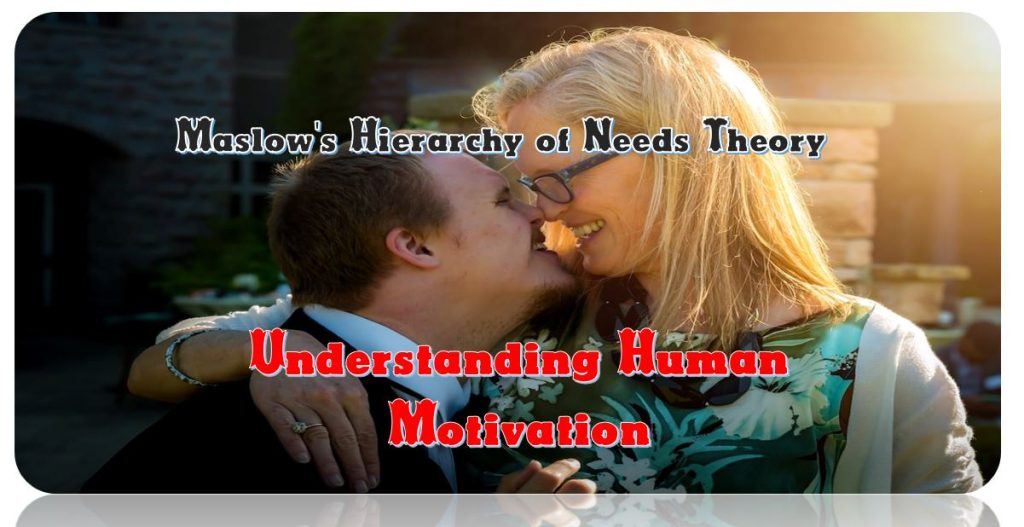In 1943, American psychologist Abraham Maslow introduced a powerful idea: that human motivation works in layers. Like steps on a ladder or blocks in a pyramid, we move from one need to another. This idea became famous as Maslow’s Hierarchy of Needs.
It explains why we first need food, water, and sleep and only later care about respect, achievement, or becoming our best selves.
Let me explain how it works and why it still matters in our daily lives.
What Is Maslow’s Hierarchy of Needs?
Maslow believed that human needs follow a specific order. If one level is not satisfied, the next level becomes hard to reach. This idea is often shown as a pyramid with five levels:
Physiological needs
Safety needs
Love and belonging
Esteem
Self-actualization
Imagine trying to study when you’re starving or worrying about your safety. Maslow says we need to first meet our basic needs before we can focus on higher dreams.
The Five Levels of Maslow’s Pyramid
Let’s walk through each level with clear examples.
1. Physiological Needs – The Basic Survival
These are our most urgent and essential needs. Without food, water, oxygen, or sleep, we cannot survive. In our daily life, this means:
Having regular meals
Drinking clean water
Having a place to sleep
Getting rest when tired
In many low-income families across South Asia, these needs are still not fully met, which affects mental focus, education, and emotional stability.
2. Safety Needs – Feeling Protected and Secure
Once a person has food and shelter, they start looking for safety physical and emotional.
Examples include:
A safe home with locked doors
Stable income or job security
Health care and clean surroundings
Protection from violence or abuse
Many people in Pakistan and India, especially in rural areas, still lack health security or job stability. That’s why anxiety and stress often increase even when basic food is available.
3. Love and Belonging – Relationships and Acceptance
Humans are social beings. After food and safety, we long for connection.
This means:
Being part of a family
Having close friendships
Feeling loved by someone
Being accepted by a group or community
In South Asia, where family and social reputation are very important, this level affects mental peace deeply. Isolation, rejection, or loneliness can lead to depression even if basic needs are met.
4. Esteem Needs – Self-Worth and Respect
Once people feel loved and safe, they want to be respected and valued.
This includes:
Achieving something meaningful
Being praised or appreciated
Feeling confident in your skills
Getting recognition from others
Students who get awards or employees who are respected by their managers feel strong self-esteem. But constant failure, bullying, or poverty can damage this level.
5. Self-Actualization – Becoming Your Best Self
At the top of the pyramid is the desire to grow, create, and fulfill your potential.
Here, people want to:
Learn more
Create something new
Express themselves (art, writing, speaking)
Serve others meaningfully
Follow their passion or dreams
This level is personal. For some, it means starting a business. For others, writing poetry, becoming a teacher, or helping others in need. Only a few reach this stage regularly but those who do often feel deep peace and purpose.
Real-Life Examples from Our Society
Let’s look at how Maslow’s theory fits real people in Pakistan or India:
| Level | Example from Daily Life |
|---|---|
| Physiological | A laborer eating daal roti after a long day |
| Safety | A schoolteacher receiving her monthly salary |
| Belonging | A joint family celebrating Eid together |
| Esteem | A university student winning a scholarship |
| Self-Actualization | A retired person writing a book on village history |
These examples show how needs build on each other. A hungry person doesn’t care about praise. But once they’re full, they start dreaming bigger.
Why Maslow’s Theory Still Matters
Even after 80+ years, Maslow’s pyramid is used in:
Education – Teachers can’t teach hungry or scared students. They build support from the bottom up.
Parenting – Parents can support emotional needs once physical needs are stable.
Workplaces – Companies now offer safe offices, health insurance, and rewards to keep workers motivated.
Therapy – Psychologists check which basic needs are missing in clients’ lives.
In short, it helps us ask a simple question: “What do I truly need right now?”
Practical Uses of This Theory Today
Here’s how you can use Maslow’s theory in everyday life:
At Home: Understand your children’s behavior. Are they crying for attention (belonging) or because they’re hungry (physiological)?
At Work: If someone is always worried about losing their job, don’t expect creative ideas (self-actualization).
In School: Before exams, give students confidence (esteem), not just notes.
In Therapy: Ask: is the client sleeping well? Eating regularly? Feeling safe?
Maslow reminds us that people are not lazy or careless they may just be stuck on a lower level of need.
Cultural Limitations and Criticism
Maslow’s theory was made in the USA. Some things may not fully fit South Asian life.
For example:
In Pakistan, family honor (belonging + esteem) may be more important than personal growth.
Some people find spiritual needs more central than personal dreams.
Poverty or crisis may force people to skip levels (e.g., a poor student seeking education despite hunger).
Also, people don’t always move in order. Life is not a staircase. Sometimes we jump up or fall back depending on crisis or success.
That’s why some psychologists say Maslow’s pyramid is too simple. But still, it helps start good conversations.
A Useful Guide for Human Behavior
Maslow’s theory gives us a big picture of what humans need to feel whole.
It shows that behind every behavior whether a child’s tantrum, a teen’s silence, or a worker’s complaint is often an unmet need. When we understand this, we become more kind, patient, and helpful toward others.
You don’t need to be a psychologist to use this theory. Just ask:
“Is this person hungry, scared, lonely, ignored, or stuck?”
That one question can build empathy and action.
TL;DR:
Maslow’s Hierarchy of Needs explains that human motivation works in levels from basic survival (food, safety) to emotional needs (love, respect), and finally to personal growth (self-actualization). Each level supports the next. While not perfect for every culture, this theory still helps teachers, parents, and workplaces understand what drives human behavior and how to support well-being step by step.

Imran Shahzad, M.Sc. Psychology (BZU, 2012), shares real-world mental health tips and emotional guidance in simple English for everyday South Asian readers.


